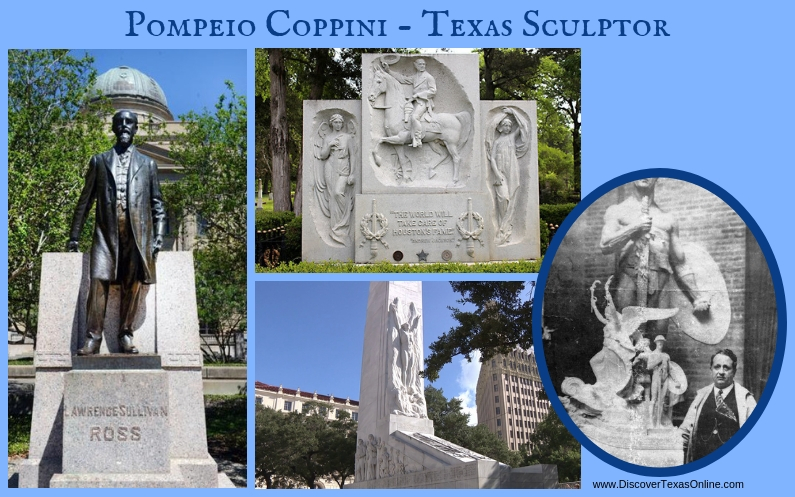
To tell you about Pompeio Coppini, I first have to tell you about Frank Teich, a German sculptor and stone-cutter who came to this country in the 1870s and settled in Chicago. Teich was commissioned to carve the stone on the Cook County Courthouse, and in 1883 he moved to Austin to supervise the cutting of the granite blocks that make up our capitol building.
As you might imagine, this project brought Teich wide acclaim so that he became quite popular. Many people asked him to carve grave monuments, and his marble statues of weeping angels are quite beautiful. He was also hired to produce commemorative statues and monuments such as the Dick Dowling monument in Houston’s Hermann Park, a statue honoring the cause of Confederate soldiers for the Daughters of the Confederacy in Dallas, and the elaborate base for a statue honoring Sam Houston. He also carved a monument honoring volunteer firemen for the grounds of the Texas capitol in Austin. It was when he received a commission to carve another statue for the capitol grounds–one honoring the Confederate dead–that Pompeo Coppini comes into the picture.
Teich set to work carving the base of the Confederate statue and wrote to the Roman Bronze Works in NYC asking their recommendation for a competent sculptor who could handle the bronze figures.
Based on their recommendation, Pompeo Coppini came to Texas in 1903 and liked it so well that he spent the rest of his life in San Antonio. As renowned as Teich had become, Coppini’s work has become even more familiar! It was Coppini who cast the bronze sculpture of Lawrence Sullivan Ross that stands in front of the Texas A&M Academic building. He also carved the statue that marks the grave of Sam Houston in Huntsville. And Pompeo Coppini carved The Spirit of Sacrifice for the face of the Cenotaph at the Alamo as well as the images of the Alamo heroes that grace its sides.
In the end, the works of Frank Teich’s employee, Pompeio Coppini, became as well known and loved as those of the man who hired him.



